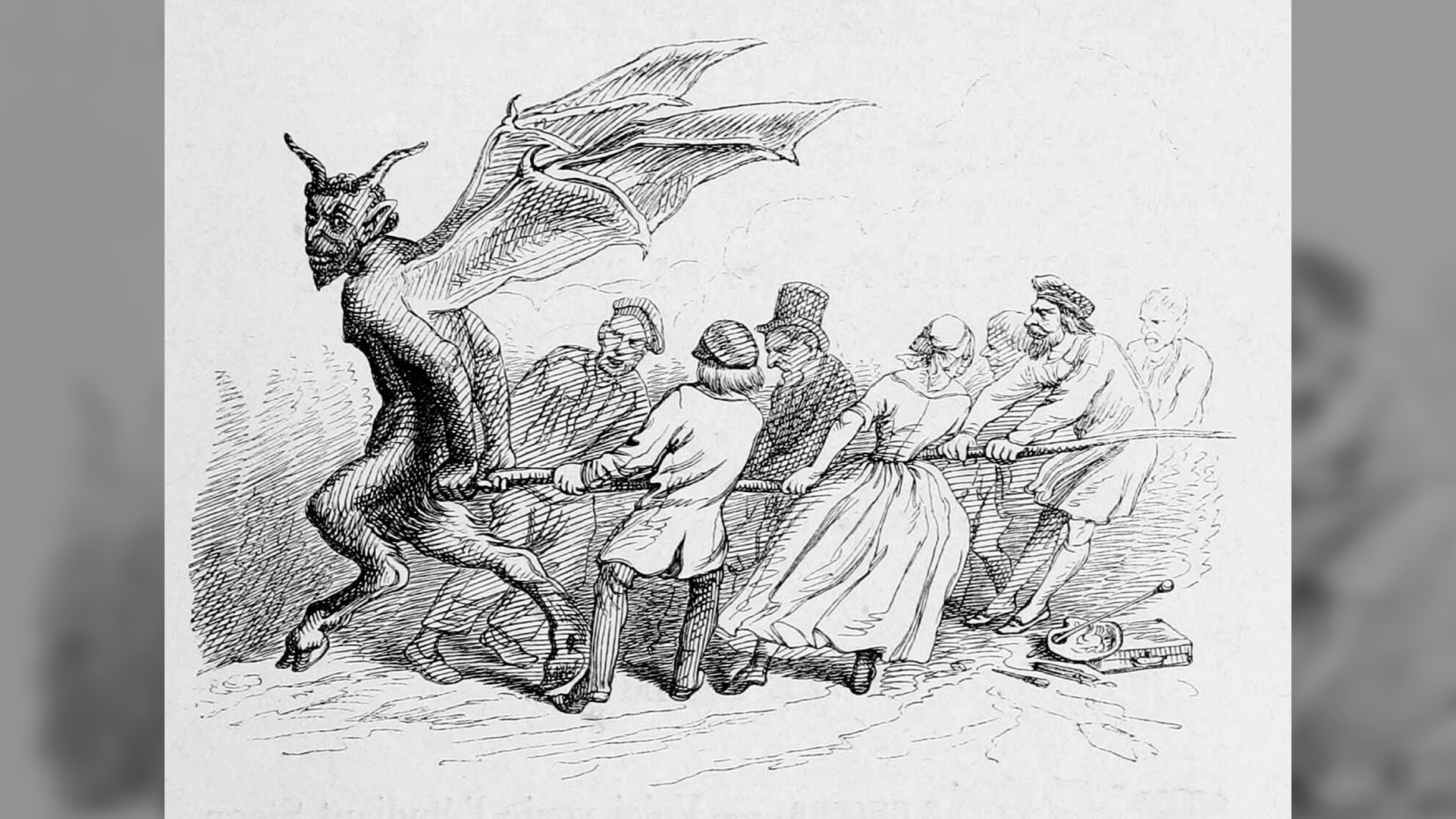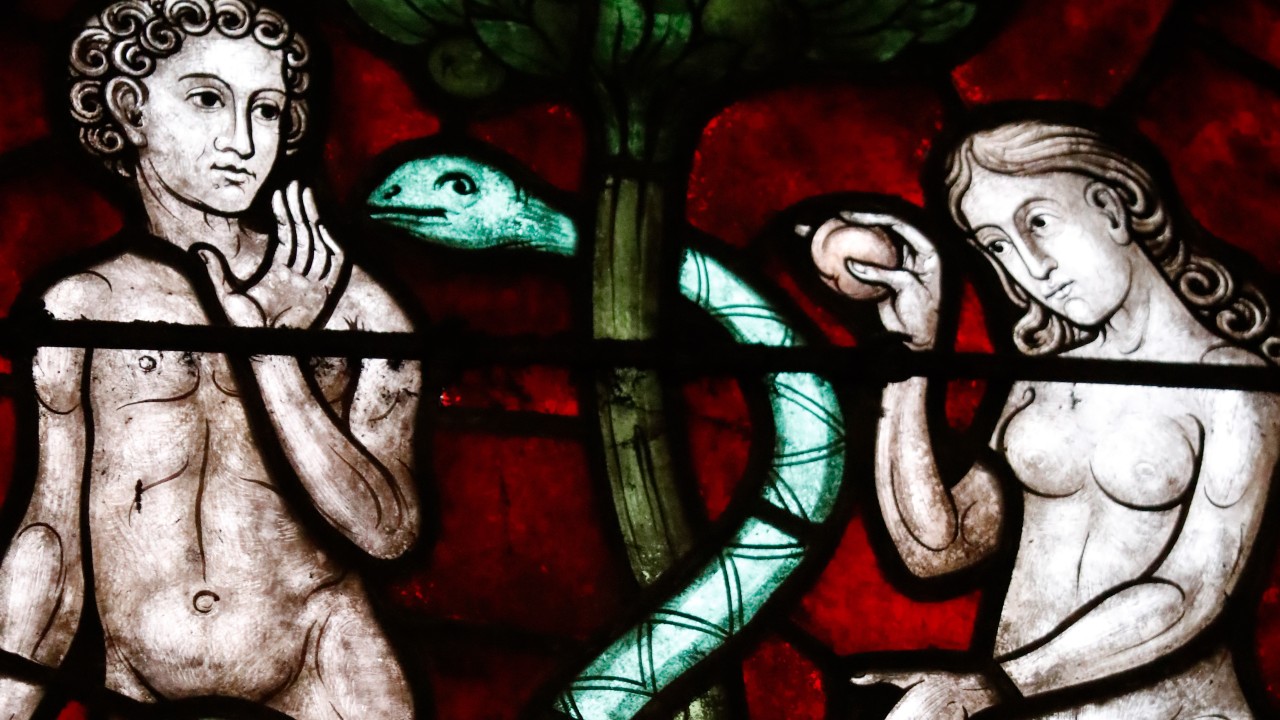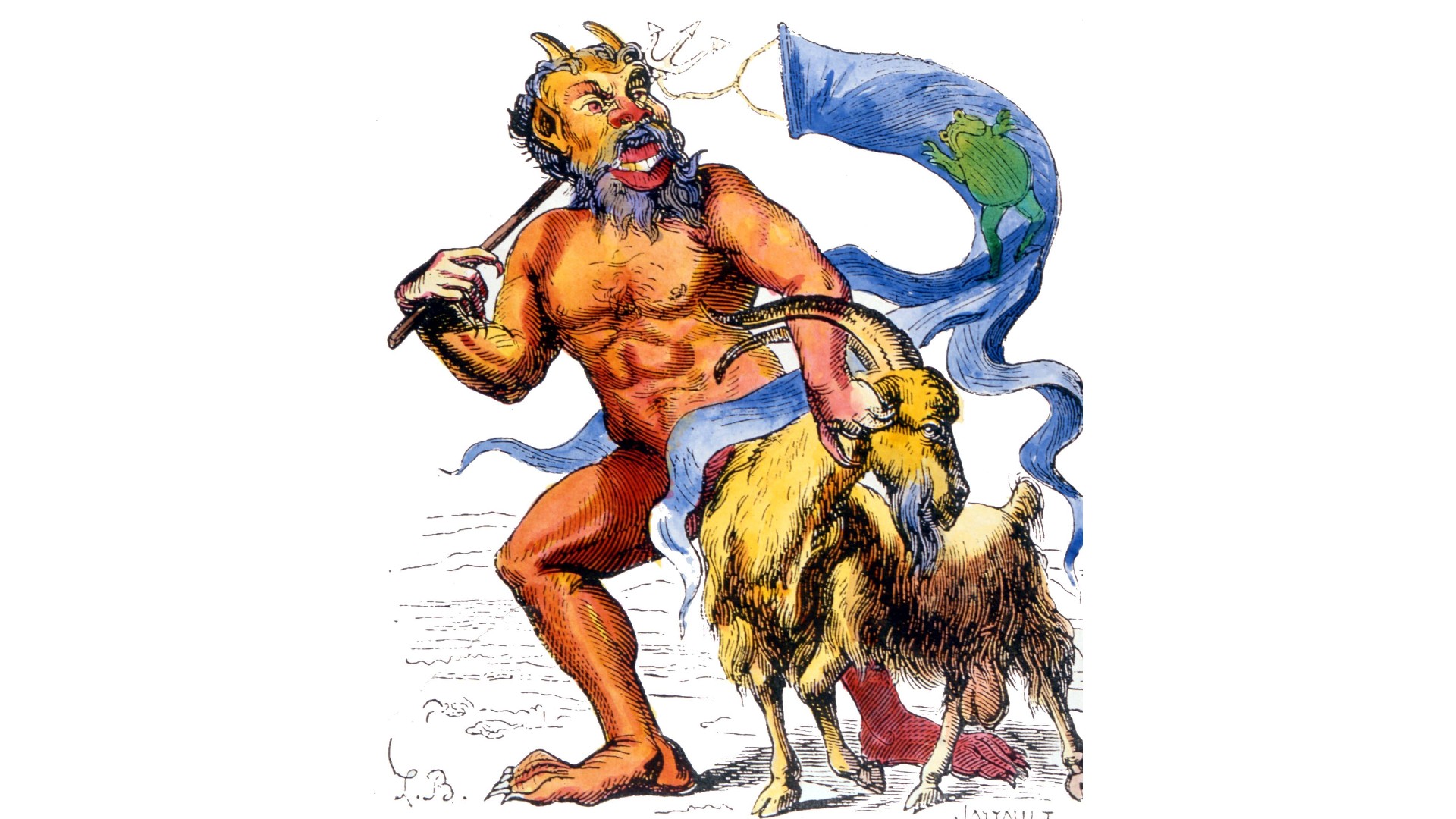Why does the devil have horns and hooves?
Many modern depictions of the devil show him with the horns and hooves of a goat. But just why does the devil have horns and hooves?

Satan is often shown in popular depictions with horns on its head, furry legs and cloven hooves of a goat.
But just why is the devil depicted with horns and hooves?
It turns out that historians don’t agree on when this depiction of the devil became popular and where it came from.
The devil’s appearance is not described in the bible, Marina Montesano, a professor of Medieval History at Italy’s university of Messina, wrote for National Geographic.
He was later identified with the serpent or snake in the Garden of Eden who persuaded Eve to eat the fruit of the Tree of Knowledge of Good and Evil; but there’s no mention of his horns and hooves anywhere in the bible. And for the most part, the goatlike depiction doesn't show up in medieval or even Renaissance images of the devil. But by the 19th century, the idea of a horned devil with cloven hooves was firmly established.
Related: What does the devil look like? Historical depictions of Satan
Changing portrayals

Early depictions of the devil don’t show him with horns and hooves.
Get the world’s most fascinating discoveries delivered straight to your inbox.
For instance, the devil is a blue angel in a 6th century mosaic at the Basilica of Sant'Apollinare Nuovo in Ravenna, Italy. Later he’s identified as "the beast," and he’s often portrayed as a dragon; a 15th century painting of Saint Augustine (or maybe Saint Wolfgang) confronting the devil depicts him as a dragon-like creature with bat-like wings.
But then there’s Pan. In Greek mythology Pan was the god of the wild, shepherds, and flocks; and he was usually shown in the form of a faun or satyr with the hind-legs, hooves, and horns.
Early Christian writers labeled Pan as a demon in their quest to persuade people to forsake polytheism in favor of the newer religion.
But Pan wasn’t especially important in the classical pantheon, and his classification as just another demon doesn’t explain why the foremost of demons — Satan — looks like a satyr.
"Satyr-like" demons
Some historians suggest that age-old associations of goats with the underworld accounts for modern depictions of the devil with a goat’s horns and hooves.
For example, the demon Azazel may be linked in Jewish legend to the ritual of "scapegoating," in which a goat cursed with the sins of the Jewish people is sent out into the wilderness on Yom Kippur, the "Day of Atonement."
In a 2013 study in the journal Numen, Hebrew university historian Alexander Kulik argued that the portrayal of the devil with horns and hooves originated in early Jewish literature and can be seen in "The Greek Apocalypse of Baruch”, a text written in Greek between the fall of Jerusalem in A.D. 70 and the third century.
The text described a demonic race with the hind-quarters of donkeys, claiming they constructed the lowest levels of the Tower of Babel; and Kulik argues this passage shows the notion of "satyr-like" demons existed in Jewish thought at the time.
That description, Kulik argues, might have influenced later Christian portrayals of the devil as a satyr, possibly through Christian authors who studied Jewish texts, like the fifth century scholar Saint Jerome.
Ronald Hutton, a historian at the University of Bristol in the U.K., however, suggested that horned devil depictions originate much later than that.
He argued that the devil became associated with Pan only two centuries ago, during a Neo-Pagan revival in Europe that sought to challenge the predominant Christian beliefs.The movement included a literary "Cult of Pan,", that united a romantic view of nature with the ancient Greek god; and that has led to the modern identification of Pan with the devil, Hutton told Live Science in an email.
"The transition to a staple modern image of goat horns and feet and goatee beard is nineteenth-century, and does seem to derive from the contemporary literary and artistic cult of Pan, as god of the increasingly-valued countryside," he said.
Editor's Note: This story was updated at 9:20 a.m. E.S.T. to note that Saint Jerome lived during the fifth century, not the eighth century.
Tom Metcalfe is a freelance journalist and regular Live Science contributor who is based in London in the United Kingdom. Tom writes mainly about science, space, archaeology, the Earth and the oceans. He has also written for the BBC, NBC News, National Geographic, Scientific American, Air & Space, and many others.



